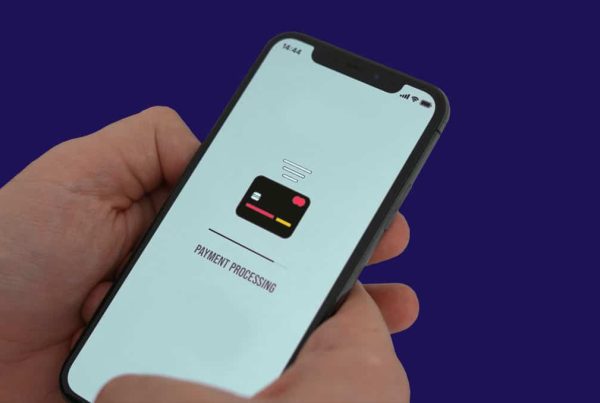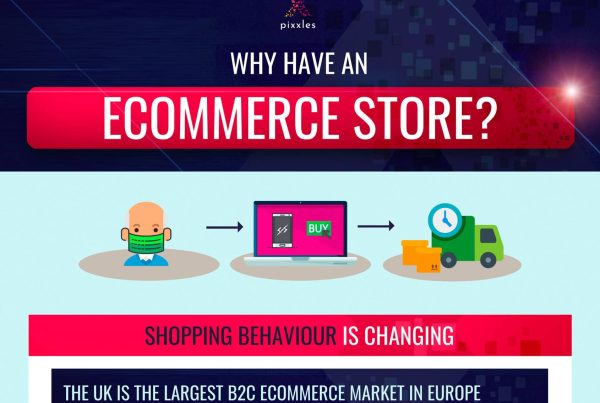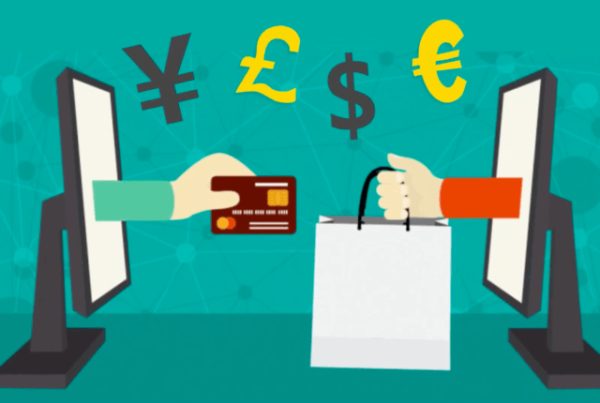Now that digital transactions have become the norm, the importance of virtual terminal technology cannot be overstated.
Virtual terminals are an integral part of the financial ecosystem, enabling businesses to conduct transactions seamlessly across different platforms.
➡️ But what exactly does a virtual terminal do?
This article aims to provide a simple, straightforward overview of this crucial component of online commerce.
What Does A Virtual Terminal Do?
A virtual terminal is a web-based solution that allows businesses to process card-not-present transactions.
Instead of physically swiping a card through a reader, you can simply enter the customer’s credit card information into your online point-of-sale system.
Essentially, a virtual terminal transforms your computer or smartphone into a credit card terminal. This then allows for convenient and secure processing of payment card information.
Virtual terminals perform the following functions:
- Manual customer information input
- Receipts
- Recurring billing
- Customizable reports
- Fraud Prevention
- Tokenization
- Multi-Currency Support
- Integration with Other Systems
- Batch Processing
- Refunds and Voids
- Customer Information Management
- Invoicing
How Does a Virtual Terminal Work?
To use a virtual terminal, you will need to:
1. Open your virtual terminal via a secure web page or app.
2. Manually enter the customer’s payment information into the virtual terminal.
3. Input the sales details (amount, card number, etc.)
4. Submit the transaction.
5. Receive a transaction authorized or declined message.
6. Email the client their receipt, if the transaction is approved.
What Are The Benefits of A Virtual Terminal?
There are multiple benefits to using a virtual terminal. Let’s explore them.
Accept All Major Cards With Your Virtual Terminal
Today, virtual terminals allow you to accept all major credit cards and debit cards, such as Discover, Visa, and Mastercard.
Enable Recurring Payments
Want to enable recurring payments for your customers? You can do this with a virtual terminal.
If your business has recurring or subscription-based billing, a virtual terminal can store encrypted customer data for future transactions.
This is done through tokenization, which allows the merchant to store a token (a non-sensitive placeholder) rather than the customer’s card details.
This token can be reused during subsequent transactions to process the payment without needing to manually re-enter the card details. Naturally, this saves time and reduces the risk of manual entry errors.
Accept Mail Order/Telephone Order (MOTO) Payments
A virtual terminal allows businesses to accept Mail Order/Telephone Order (MOTO) payments. Keep in mind, though, that card-not-present (CNP) transactions have higher processing fees.
Enjoy Safe Payments
While no system is perfect, virtual terminals are quite secure and encrypt any sensitive information the customer inputs.
Tokenization
When a customer provides their payment details, their Primary Account Number (credit card number) is replaced by a token—see the Enabling Recurring Payments section above.
Because the token is a non-sensitive placeholder, the actual card details are not stored in the terminal system.
In the event of a data breach, the tokens would be useless to cybercriminals as they cannot be reverse-engineered to obtain the original card data.
Once the payment information reaches its destination securely, the virtual terminal transforms from a payment gateway to a payment processor. It communicates with the customer’s bank, requesting transaction authorization.
Once approval is received, the virtual terminal finalizes the transaction by debiting the customer’s account and crediting the merchant’s account. This entire process is usually completed within seconds.
It’s worth noting that the funds may not be immediately available in the merchant’s account.
Clarification About The Payment Gateway System
Keep in mind that the terms “payment gateway” and “payment processor” in this context are misnomers.
Technically, a virtual terminal is a feature within a payment gateway that lets businesses manually enter credit card information for processing. It’s one function among many within a comprehensive payment gateway system.
Prevent Fraud By Using A Virtual Terminal
Virtual terminals protect sensitive customer data by incorporating various security measures, including fraud detection tools and geolocation technologies.
Fraud Detection
Virtual terminals are often fortified with advanced fraud prevention tools. These may include systems that detect suspicious activity patterns and flag transactions that deviate from typical customer behavior.
Additionally, virtual terminals use address verification systems (AVS) and card verification value (CVV) checks.
AVS compares the billing address provided by the customer with the address on file at their credit card company. CVV checks, meanwhile, require the customer to enter the security code found on their card.
Both of these systems add extra layers of security, making it more difficult for unauthorized users to make fraudulent transactions.
Geolocation Technologies
Some virtual terminals also incorporate geolocation technologies to identify the physical location of the customer, providing another means to spot potential fraud. If the customer’s location does not match the billing address, the system may flag the transaction for review.
Therefore, with the combination of encryption, activity monitoring, AVS, CVV checks, and geolocation technologies, virtual terminals offer a robust defense against fraud.
Take Payments In Multiple Currencies
Many virtual terminals support transactions in multiple currencies, making them ideal for businesses that operate internationally or have customers from different countries.
Without this capability, businesses would need to deal with exchange rates and conversions manually, which is time-consuming and prone to error. However, with a multi-currency virtual terminal, conversions are handled automatically.
In some cases, multi-currency support can also provide businesses with more predictable financial planning. Businesses can set their currency conversion rates or choose to receive payments in the customer’s currency, thereby reducing exposure to currency fluctuations.
Attract and Retain International Customers
Accepting multiple currencies also helps businesses attract and retain international customers, as it provides a more convenient payment experience.
Reporting and Analytics Via Your Virtual Terminal
In addition to simply processing transactions, virtual terminals can collect and analyze transaction data.
For example, they can track sales volume over time, the average transaction size, and the number of repeat customers. This data can be broken down in various ways, such as by the time period.
This can help businesses improve their marketing strategies and overall customer service.
Comply With PCI DSS
Virtual terminals not only help reduce the risk of financial fraud but also ensure compliance with industry standards, such as the Payment Card Industry Data Security Standard (PCI DSS).
In doing so, they promote trust and confidence among customers.
Will My Business Benefit From a Virtual Terminal?
Most likely, yes. This is especially true for businesses that are service-oriented, looking to save on hardware, or frequently take online payments and phone payments.
Here are additional reasons why your business might benefit from a virtual terminal.
Streamlined Business Operations
Virtual terminals can integrate with business systems, such as accounting software or customer relationship management (CRM) systems. This can streamline operations, reduce manual data entry, and improve accuracy.
Greater Accessibility
Virtual terminals make it possible for businesses to accept a wider range of payment methods, including credit cards, debit cards, and sometimes even digital wallets. This can make a business more accessible to customers who prefer these payment methods.
Choosing A Virtual Terminal Checklist
Choosing the right virtual terminal for your business is a significant decision. Here is a checklist of factors to consider when making your choice:
- Cost of the Virtual Terminal – Look into the upfront and ongoing costs of the virtual terminal. Some providers charge a monthly fee. Others have a one-time setup cost.
- Processing Fees – Understand the virtual terminal’s transaction processing fees. They can be a flat rate per transaction, a percentage of the transaction value, or a combination of both.
- PCI Compliance – Ensure the virtual terminal is PCI compliant. This is crucial for maintaining the security of cardholder data and avoiding potential fines.
- Multi-Currency Support – If your business operates internationally or if you have customers in different countries, you’ll want a virtual terminal that supports multiple currencies.
- Security Features – Look for advanced security features like encryption, tokenization, Address Verification Service (AVS), and Card Verification Value (CVV) checks.
- Integration with Other Systems – Check if the virtual terminal can integrate with your existing business systems, such as your CRM, accounting software, or e-commerce platform.
- Customer Support – Evaluate the quality of customer support. Is it available 24/7? What channels of communication are provided?
- Recurring Billing – If your business model includes subscriptions or recurring payments, make sure the virtual terminal supports this feature.
- Reporting and Analytics – Look for virtual terminals that provide detailed reports and analytics. These can offer valuable insights into your sales and customer trends.
- Ease of Use – The virtual terminal should be user-friendly for both your team and your customers. A complicated or unintuitive system could slow down transactions and lead to user errors.
- Refunds and Chargebacks – Check how the virtual terminal handles refunds and chargebacks. The process should be simple and efficient.
- Scalability – Choose a virtual terminal that can scale with your business. Your needs will likely change as your business grows.
- Batch Processing – If your business processes high volumes of transactions, a batch processing feature can be beneficial.
- Invoicing Features – If you send invoices to customers, look for a virtual terminal that has integrated invoicing tools.
- User Reviews and Reputation – Look at reviews from other businesses and consider the provider’s reputation in the industry.
Pixxles Virtual Terminal
Our Business Solutions page has more information about our Virtual Terminal.








